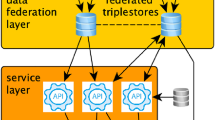Abstract
The link between science and technology represents a major strategic stake, so the relation between scientific bibliographic references and technical bibliographic references can be of very important documentary interest. To set up this link, International Patent Classification catchwords have been used as a switching language. A previous feasibility study had shown the possibilities of such a full automatic correspondence and its obvious inadequacies. We present here the most important modifications brought to this correspondence, in particular the consideration of multilingual indexes which allow to link several indexation fields with one of the most complete representation of patent classification. The major evolution of our project affects the correspondence mechanism which now generates a global reindexation of bibliographic reference with classification codes. We also discuss the concept of correspondence itself which must be interpreted as a simple presumption of the link. There are some consequences due to these developments: first, insofar as there is not an univocal relation, end users do not have to select switching keywords which generate concordances. They can directly use codes which symbolize the industrial property classification. Next, main documentary indicators do not seem to be adapted to measure the performance evaluation of this new field. It has the single role of suggesting trails that can be explored. Lastly, it seems that only end users should be able to supply a complete validation and we show that a documentary validation is not sufficient.
Similar content being viewed by others
References
Conseil économique et Social, Charzat M. (1994), Les transferts de technologie en mativre de recherche industrielle. J.O. Avis et rapport du Conseil économique et Social, 19: 68.
CRRM (1997), L'Observatoire— Marseille— Publications. (Online). URL address: http://crrm.univ-mrs.fr/orps/inist/orps-inist.html.
Dahlberg I. (1981), Towards establishment of compatibility between indexing languages,International Classification, 8(2): 86–91.
Dou H. (1993), Intelligence sociale et veille technologique,Humanisme et entreprise, 17: 53–64.
Faucompré P., Baldit P., Dos Santos R., Quoniam L., Dou H. (1995), Bibliometric tools for bibliographic databases: technological and methodological aspects for relational use of bibliographic databases, In:Proc. of the Fifth Int. Conf. of the Int. Soc. for Scientometrics and Informetrics, June 7–10, 1995. River Forest, IL. Medford, NJ: Learned Information, 157–166.
Fen Z. (1987), Analysis of the properties of the International Patent Classification,World Patent Information, 9(3): 152–156.
Guellec D. (1993)Innovation technologique, croissance et compétitivité, Paris: INSEE.
Horsnell V. (1974),Intermediate Lexicon for Information Science: A Feasibility Study, London: Polytechnic of North London, School of Librarianship.
Iribarne A. (1987), Les PME face au changement technologique, in:A, Silem (Ed.),Diffusion des nouvelles technologies, stratégies et effets: Colloque international, Lyon, 18–19 sept. 1986. Paris: CNRS, 185–208.
Jakobiak F. (1994),Le brevet: source d'information, Paris: Dunod.
Knoll H. (1983), Observations on concordances,World Patent Information 5(1): 19–34.
Lainée F. (1991),La veille technologique: de l'amateurisme au professionnalisme. Paris: Eyrolles.
Lawson W. (1979), The use of patent information as an indicator of technological output. OCDE: 2nd Workshop on the measurement of R and D output. Paris.
Maniez J. (1987),Les langages documentaires et classificatoires, Paris: Ed. d'Organisation.
Retourna C. (1995),Analyse de cas concrets d'innovations dans les PME/PMI: problématiques et discussions, Marseille: Thèse Univ. Aix-Marseille 3.
Risjbergen C.J. van. (1978), Automatic classification in information retrieval,Drexel Library Quaterly, 14(2): 75–89.
Schmidt-Tiedmann K. (1982), A new model of the innovation process,Research Management, 25: 18–21.
World Intellectual Property Organisation (1990),International Patent Classification (fifth ed. 1989): general information, Geneva: WIPO.
Ziman J. (1992) A neural net model for innovation,Science and Public Policy, 18: 65–75.
Author information
Authors and Affiliations
Rights and permissions
About this article
Cite this article
Faucompré, P., Quoniam, L. & Dou, H. An effective link between science and technology. Scientometrics 40, 465–480 (1997). https://doi.org/10.1007/BF02459294
Received:
Issue Date:
DOI: https://doi.org/10.1007/BF02459294



